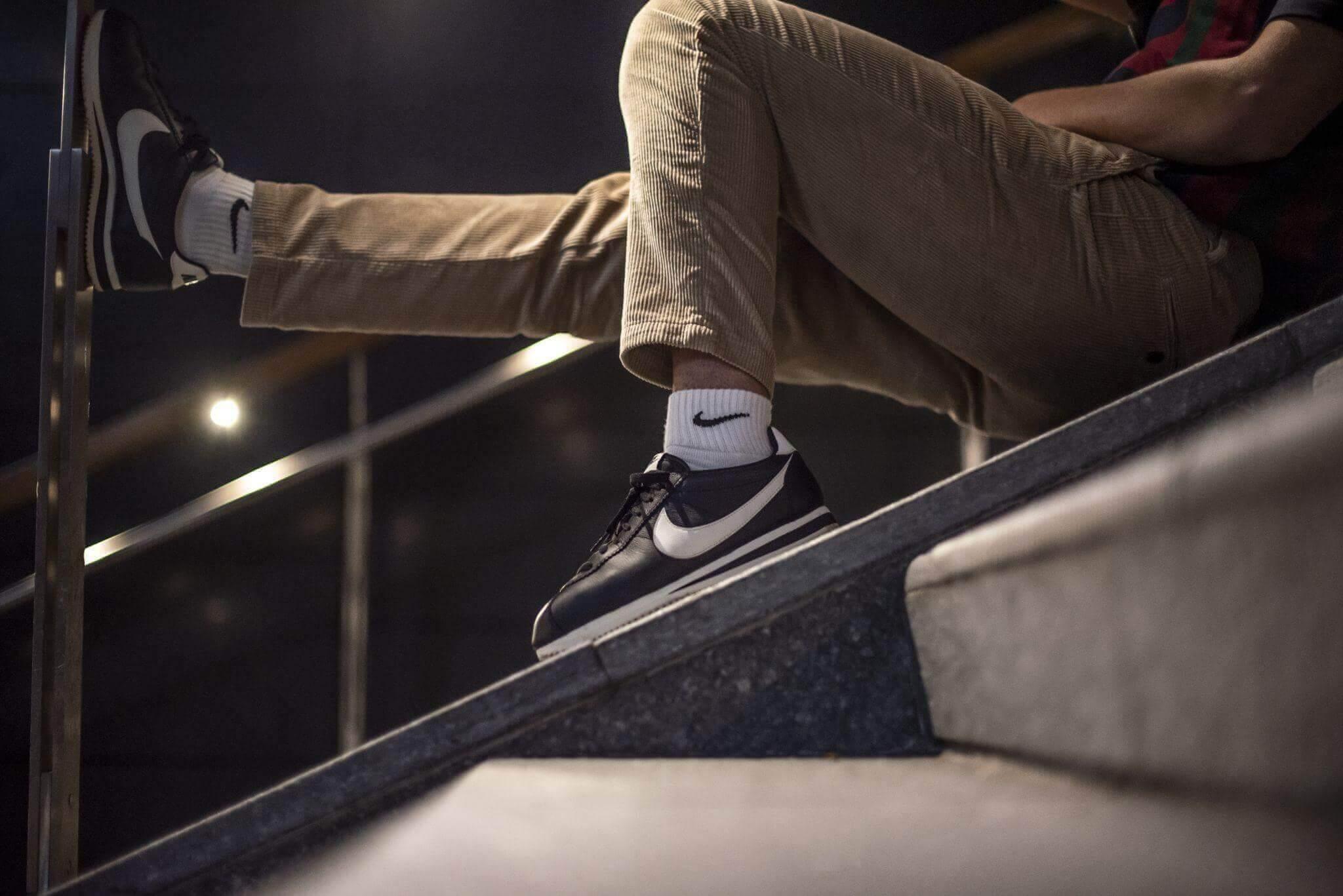In an ultra-competitive world like fashion, finding a differentiating concept is no longer a luxury, but a necessity. It’s not the prettiest logo or the best quality that sells – it’s that little “something extra” that grabs attention, creates loyalty and keeps customers coming back for more.
At MicroStore, we support brands and retailers every day in the development of their projects. One thing is certain: successful brands are those with a clear positioning, an original concept and a strong identity.
In this article, discover concrete advice and examples of differentiating concepts in fashion, to help you build a strong brand right from the start.
1. Why your concept is more important than your collection

A common mistake? Thinking that having beautiful pieces is enough to sell. In fact, without a strong concept, even the best clothes can go unnoticed. In a saturated market, what attracts is your promise: what you embody, what you change, what you bring that’s new.
Your concept is :
- A strong promise (product or values)
- A recognizable universe
- A positioning that stands out
Example: Basic sweaters? There are hundreds of them. But organic cotton sweatshirts embroidered by women in rehabilitation = a brand with impact.
2. The 5 pillars of good brand positioning

Positioning is your brand’s strategic compass. Without it, your message is blurred and your customer doesn’t understand why they should choose you. Good positioning is built on simple but powerful questions.
Ask yourself these 5 questions:
- Who do I design for? (teens, working girls, moms, curvy women, stylish men, etc.).
- What problem am I solving? (unobtainable style, fair price, lack of sizes, respect for modesty, etc.).
- What style or universe do I defend? (minimalist, retro, bohemian, urban, African, futuristic…)
- What is my product promise? (durability, comfort, originality, quality, price…)
- What is my brand tone/personality? (warm, committed, provocative, elegant, street…)
MicroStore tool: write your brand manifesto in one page to make everything clear.
3. Concrete examples of differentiating concepts in fashion

There are a thousand ways to stand out in fashion. Here are 9 concept ideas that can serve as a starting point or inspiration for your brand:
1. Community trademark :
A brand designed with, for and by an active community (Muslim women, young mothers, K-pop fans, etc.).
Example: Like Nike, which built its empire around a community of inspired athletes, federate an engaged audience. Imagine a participative brand where customers choose the next colors or vote for the models to be produced. This creates a sense of belonging, increases loyalty, and turns your customer into an ambassador. You’re no longer alone in bringing the brand to life: your community co-constructs it with you.
2. Fashion and social commitment:
Each piece is made in a solidarity workshop or funds a humanitarian project.
Example: Like Patagonia, which donates part of its profits to environmental causes, your brand can link purchase and impact. This reassures customers in search of meaning, and can give rise to strong storytelling: present the craftswomen, publish concrete figures, highlight the impact. A supportive brand touches the heart even before it convinces with style.
3. Focus on materials or techniques :
Differentiation is achieved through materials and manufacturing (French linen, artisanal wax, local embroidery…).
Example: Veja is known for its sneakers made from ecological materials and transparent production. Drawing inspiration from this approach allows us to tell a story of manufacturing, terroir and high standards. A brand focused on materials (such as hemp or recycled silk) attracts a public sensitive to ethics, comfort and textile innovation.
4. Modular or upgradeable design :
Clothes that adapt to the body, use or season.
Example: Under Armour has revolutionized the sports sector with its technical textiles capable of regulating temperature, wicking away perspiration or enhancing performance. In ready-to-wear, this approach becomes a real added value: a skirt that can be transformed into a dress, a coat that can be adjusted to suit the season, or a shirt whose sleeves can be detached to become a cardigan. The customer perceives real added value, both useful and long-lasting.
5. Geographic/cultural concept :
Take inspiration from a region, cultural style or heritage.
Example: Daily Paper has made its African roots a brand pillar. By highlighting your origins (West Africa, Japan, Brittany…), you reach a proud and committed niche. This offers a coherent visual universe, strong legitimacy and the possibility of targeted internationalization.
6. Product ultra-specialization :
A single category perfectly mastered.
Example: MaisonCléo offers simple but unique, hand-sewn pieces, often in short supply. By focusing on a single category (shirts, pants, long dresses…), you become THE reference for this product. It’s a strong positioning, reassuring and easy to remember.
7. Lifestyle + fashion concept:
More than a clothing brand, a lifestyle.
Example: Off-White has fused art, fashion and urban culture. Imagine a brand that sells clothes + a method of productivity + a musical universe + a coherent visual atmosphere. This attracts customers who want more than clothing: they want daily inspiration.
8. Ephemeral or event concept :
A brand that lives on through events and limited editions.
Example: Supreme relies on exclusivity and buzz for each launch. You can create a brand that only releases pieces at certain times (Ramadan, summer, back-to-school), or during physical events (pop-up, trade show, expo…). This creates a sense of urgency, stimulates sales and maintains scarcity.
9. Brand with integrated educational content :
A brand that not only sells clothes, but also educates its community.
Example: Girlfriend Collective combines clothing and education on inclusivity and eco-responsibility. Producing videos, guides or masterclasses on your commitments (textile culture, empowerment, style…) builds loyalty among a committed audience and positions the brand as a benchmark.
4. How to test your concept before investing

Before producing 100 pieces, validate your concept. It’s not a hunch or a “coup de coeur” that guarantees success, but the concrete reactions of your target audience.
- Get your target to react (Insta stories, micro-surveys, interviews)
- Create a mini-landing page with your world and your values
- Suggest a pre-order or wait-list subscription
Useful resource: NanoShop to create your no-obligation test site.
5. Where to find inspiration for a differentiating concept

You don’t need to reinvent fashion to create a strong concept. Inspiration is everywhere: in trends, in customer frustrations, in your own passions.
Useful sources :
- Study your competitors’ bestsellers
- Analyze customer feedback on e-commerce stores
- Check out Pinterest, TikTok and Instagram for emerging aesthetics
- Take inspiration from other sectors: food, beauty, tech, sports, education, etc.
MicroStore tip: Make a moodboard with the style, keywords, materials, promises and values you want to embody.
6. Why MicroStore can help you turn your concept into reality

A good concept without good tools is just an idea. To move from intention to action, you need a network of trust and concrete solutions.
MicroStore can help you transform your concept into a real brand:
- Find a supplier that matches your DNA → MyFashionWholesaler
- Launch your first collection without coding → NanoShop
- Access practical information, advice and professional contacts
7. Mistakes to avoid when trying to stand out from the crowd

It’s not enough to innovate: you also have to remain readable. When you’re trying to stand out from the crowd, enthusiasm can quickly lead you to try to do too much, or to blur your message. A strong brand is not one that does everything, but one that does what it promises.
Here are the most common mistakes:
- Multiplying contradictory messages: wanting to be both ultra-luxurious and ultra-accessible, for example.
- Marketing without concrete proof: the social or ecological impact must be visible and verifiable.
- Moving away from your target: a world that’s too conceptual can lose customers instead of seducing them.
- Storytelling alone: a good story without a quality product is not enough.
8. Practical steps from idea to final concept

A good idea isn’t enough. It needs to be structured, clarified and tested. Here are the main steps in transforming an intuition into a genuine brand concept:
- Creative Brainstorm: write down all the ideas that come to you. Draw inspiration from artistic universes, your values, your daily life or your personal frustrations.
- Visual Moodboard: create an inspiration board with the colors, shapes, materials and visual worlds that reflect your identity.
- Study the competition: analyze what others are offering. List what’s recurrent, what’s missing, what’s a hit. Find your place in this landscape.
- Create customer personas: define precisely who you’re targeting. Age, lifestyle, expectations, values, budget, buying habits.
- Clarity test: formulate your concept in one sentence. Example: “An ethical ready-to-wear brand inspired by Sahelian culture for active women aged 25-40.”
- Prototype and feedback: create a first product or test content and show it to your potential customers. Gather their honest opinions.
- Refine your message: adjust your tone, your promise, your arguments according to feedback.
In conclusion: a brand that stands out is a brand that lasts.
You don’t need an XXL budget to create a differentiating brand concept. You need consistency, a real angle and the ability to convey a clear message.
With MicroStore, you have access to everything you need to get started on a solid footing: tools, suppliers, strategy, network.



